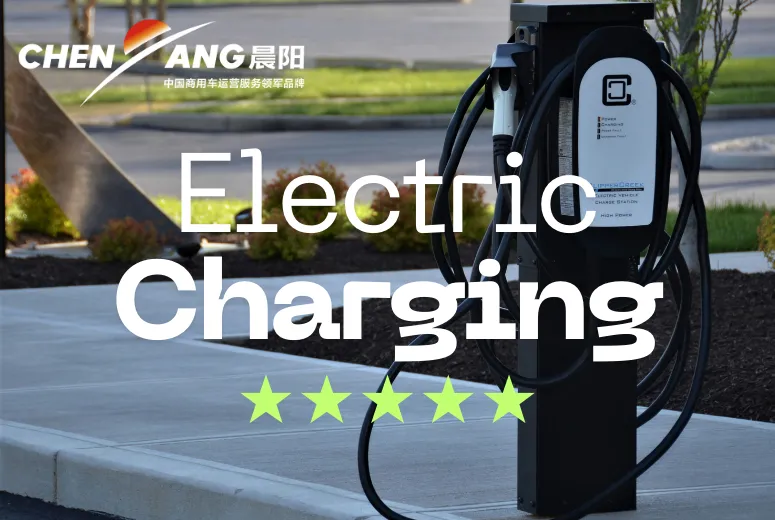Charging Infrastructure for Electric Passenger Vehicles: Meeting the Growing Demand
As electric passenger vehicles (EVs) continue to surge in popularity, one of the most pressing challenges for the automotive industry is ensuring that the necessary charging infrastructure keeps pace with the growing demand. The convenience, accessibility, and speed of EV charging are critical factors in encouraging more consumers to make the switch from traditional gasoline-powered cars to electric vehicles. However, expanding and enhancing the charging network is no easy feat. With a rapidly increasing number of EVs on the road, addressing this challenge requires collaboration between governments, utility companies, and private stakeholders.

The Importance of Charging Infrastructure in Electric Passenger Vehicles Adoption
For EV adoption to become mainstream, charging infrastructure needs to be as ubiquitous and convenient as fueling stations for internal combustion engine (ICE) vehicles. Currently, one of the primary concerns for prospective EV buyers is "range anxiety" — the fear of running out of battery power without a nearby charging station. This concern is especially prevalent in areas where charging stations are scarce or inconveniently located.
Charging infrastructure plays a vital role in alleviating this anxiety, ensuring that EV owners can easily charge their vehicles at home, at work, and on the go. A robust and widespread network of charging stations not only provides peace of mind to drivers but also accelerates the transition to electric vehicles, contributing significantly to the reduction of carbon emissions from the transportation sector.
Current State of EV Charging Networks About Electric Passenger Vehicles
Around the world, charging infrastructure for electric vehicles has been expanding rapidly, but the development remains uneven. In regions like Europe, China, and parts of the United States, charging networks have been growing to meet the rising demand. Countries with aggressive climate goals, such as the EU’s target to have 30 million electric passenger cars on the road by 2030, are prioritizing the development of charging infrastructure as a critical element of their transition to a low-carbon economy.
However, while the pace of growth is impressive, challenges remain. In rural or less developed areas, charging stations are often limited, leaving EV owners without sufficient access to charging points. Furthermore, the variety of charging standards and plug types, as well as the complexity of payment systems, can create confusion and hinder the seamless use of charging stations across different regions.
Expanding Public Charging Infrastructure About Electric Passenger Vehicles
To meet the growing demand for electric van passenger, a significant expansion of public charging stations is necessary. Governments and private companies alike are investing in charging infrastructure, with large-scale projects being launched worldwide. Some of the most common types of charging stations are:
- Level 1 Charging: Typically a standard home outlet, providing a slower charge ideal for overnight charging.
- Level 2 Charging: A faster option that requires a dedicated charging unit, typically found in public spaces like shopping centers, workplaces, and parking garages.
- DC Fast Charging: The quickest charging option, often located along highways and major travel routes, providing up to 80% charge in as little as 30 minutes.
As EV adoption increases, a key focus is on expanding the availability of fast-charging stations along major highways and in urban areas. These stations are critical for long-distance travel, making EVs a more practical option for everyday users and road-trip enthusiasts alike. Governments are also implementing policies to ensure that charging stations are installed in convenient locations, such as at high-traffic areas or near public transportation hubs, further improving access.
Challenges in Scaling Charging Infrastructure About Electric Passenger Vehicles
While the growth of charging infrastructure is promising, there are several challenges that must be overcome to scale the network effectively.
One major issue is the cost of installing charging stations. The installation of a single fast-charging station can run into the tens of thousands of dollars, with costs for infrastructure upgrades and ongoing maintenance adding to the financial burden. Public-private partnerships, grants, and government incentives are essential in alleviating these costs and ensuring that businesses, local governments, and utility providers can invest in the necessary infrastructure.
Another challenge is grid capacity. As the number of electric vehicles increases, there will be additional pressure on the electricity grid, especially in regions with high concentrations of EVs. To address this, utilities must upgrade grid infrastructure, implement smart grid solutions, and invest in energy storage systems to ensure a stable and reliable supply of electricity for EV charging.
Home Charging: A Key Component of the EV Ecosystem About Electric Passenger Vehicles
While public charging networks are essential, home charging remains a fundamental part of the EV ecosystem. Most EV owners charge their vehicles overnight, making home charging both convenient and cost-effective. To support this, many automakers are offering home charging stations as part of their vehicle packages, and homeowners are increasingly opting to install Level 2 charging stations in their garages.
In areas where public charging infrastructure is still limited, home charging offers a practical solution, especially for those who have access to private parking. However, home charging is not always viable for people living in apartments or homes without dedicated parking spaces. For these individuals, the expansion of public charging infrastructure becomes even more critical.
-
Low Maintenance + High Availability of Ownership for Mining Dump TruckNewsJul.17,2025
-
Drum Drive Axle + Air Suspension for Electric Tractor TruckNewsJul.17,2025
-
33m Boom + Full Hydraulic Outriggers: Narrow-Site Construction Practices of Mixer Pump TruckNewsJul.17,2025
-
18L Large Drum + Extended Drain Interval of Gear Oil for Heavy Duty TrucksNewsJul.17,2025
-
13m Cargo Space + Polyurethane Insulation: Long-Term Cold Chain Protection Solutions for Refrigerated Semi-Trailers for SaleNewsJul.17,2025
-
10T Water Tank + 2.5MPa Fire Pump Efficiency Analysis of Water Tank Fire TruckNewsJul.17,2025
Popular products

























